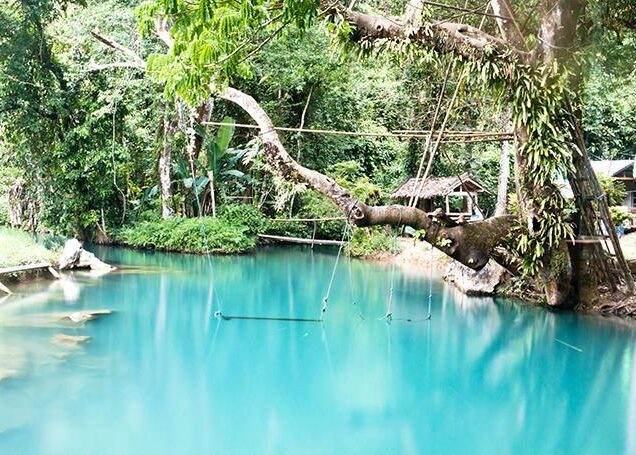

Welcome to Laos, a country so peaceful that in 1970, its capital, Vientiane, had only one set of traffic lights—the perfect place to hire a bicycle and explore the local streets and markets. Vang Vieng, a peaceful town situated on a plateau with stunning surroundings of limestone caves and waterfalls, is renowned in ancient mythology.
Vang Vieng is an excellent place to try the local cuisine.
Luang Prabang refers to the holy Pra Bang, Laos’ most sacred image of the Buddha, given to Fa Ngoum. This beautiful town is renowned for its fascinating history. Located 300 metres above sea level on the upper Mekong River, the city is dominated by Phousi, the magnificent mountain that sits at its heart.
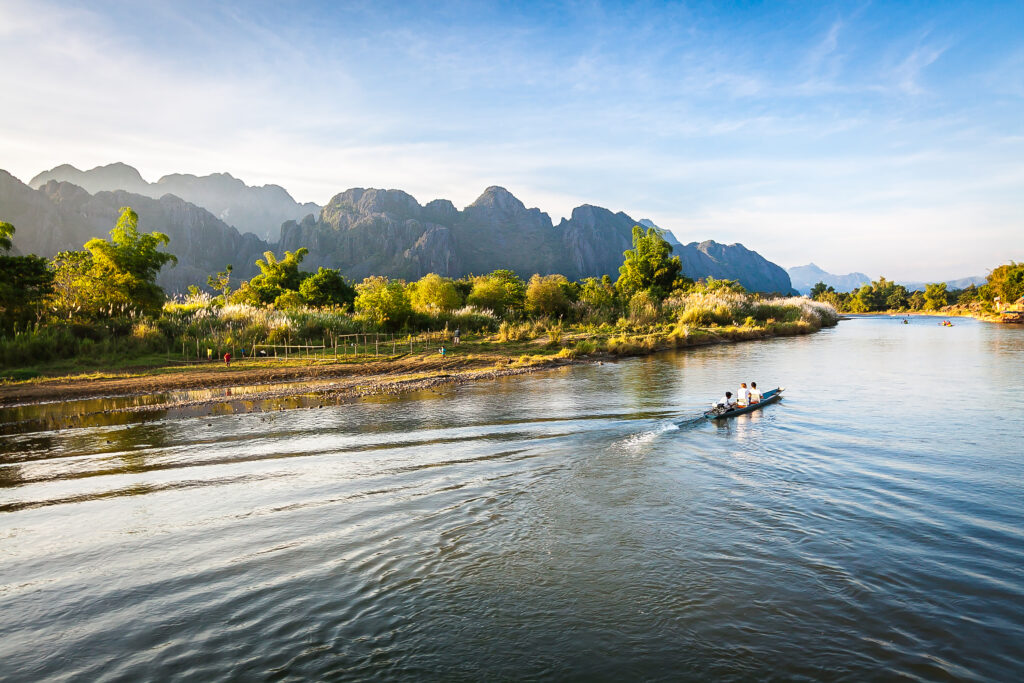
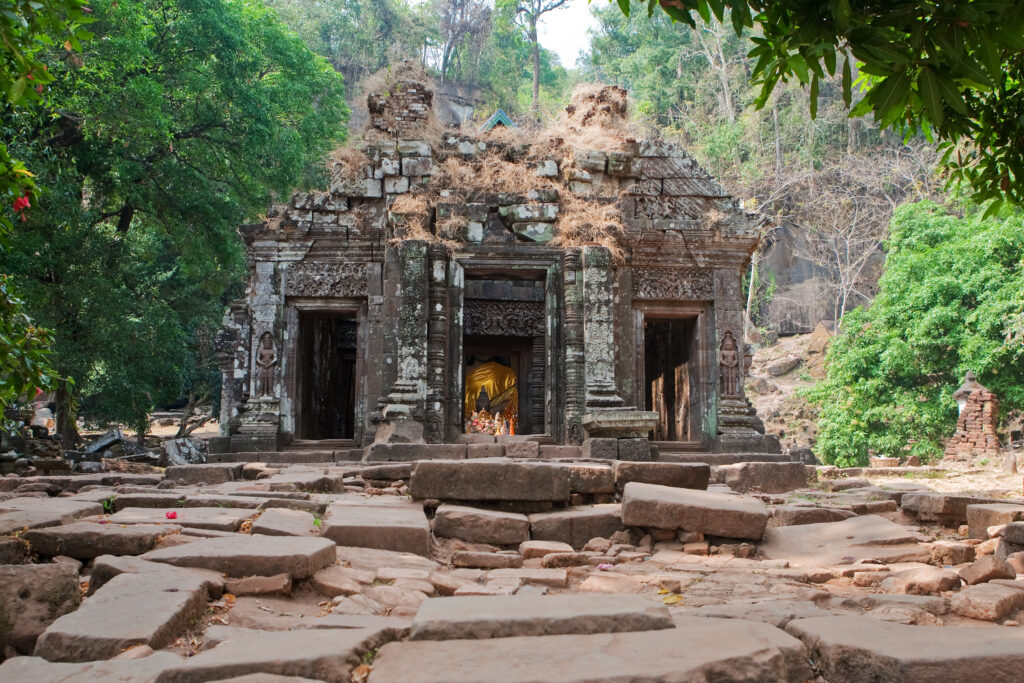
Laos can offer travellers a less frenetic Southeast Asia experience compared to its more popular neighbours, Thailand, Vietnam and Cambodia. Travelling in Laos involves shifting down a few gears, accepting a slower, more languid pace of life. Its years of cultural isolation have ensured that many traditions live on, and its authentic and charming character is one of the biggest draws. Other attractions include its natural landscape, which is characterised by dramatic ridges and river valleys, often draped in vibrant foliage. There are caves to explore, jungles to trek and mountains to scale, making it a popular adventure destination. Culturally, Laos is surprisingly diverse, from the vibrant garb of the people living in the northern hills to the Buddhist wats and temples of the lowlands and the lingering French colonial influence.
Laos’s currency is the kip (symbol: ₭ or LAK). Coins are rarely in circulation.
ATMs are increasingly common in major towns and cities, but may be unreliable. We suggest travellers carry a mixture of cards (Visa, Mastercard or Wise) as well as cash (USD and LAK). Travel cheques are another secure way to carry your travel funds, and they should be accepted at most banks throughout the country. The maximum withdrawal from a Laos ATM is typically between 1 and 2 million kip.
As one of the world’s poorest nations, Laos is an inexpensive country for many travellers. Food is cheap, particularly if you are eating at street stalls and cheap local restaurants. A meal for two in an inexpensive restaurant can cost around US$18, equivalent to approximately 400,000 kip (US$2.50-7.00). A bottle of water costs around 4,000 kip (50c), and a bottle of beer is around 33,000 kip (US$1.35). Entry fees for museums and short excursions typically range from 10,000 to 30,000 kip (US$1-3)
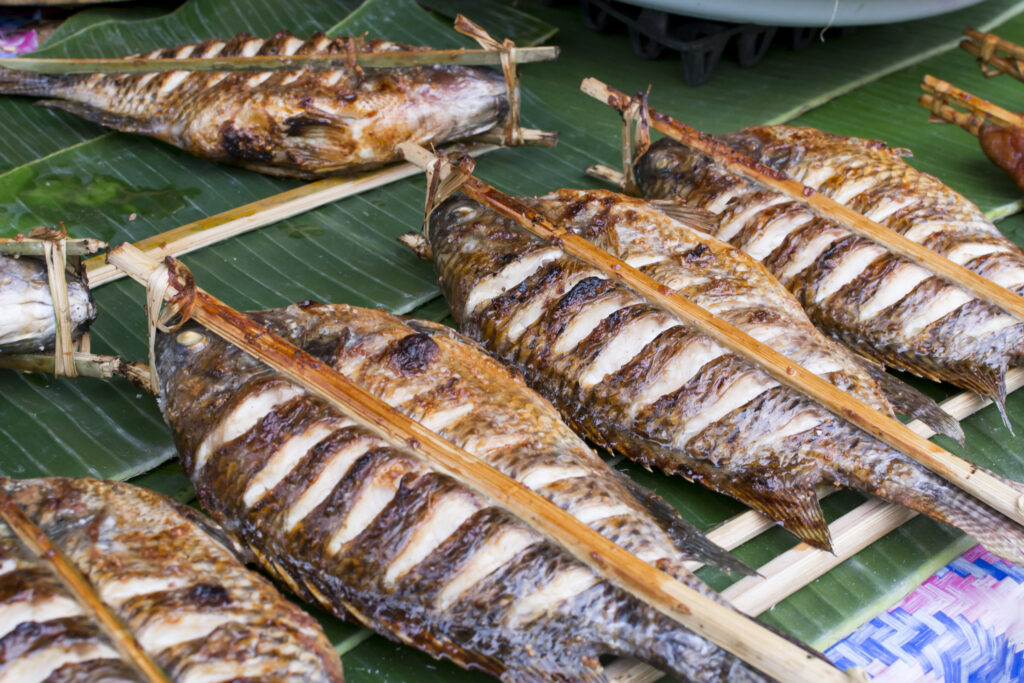
Bargaining is part of the culture in Laos, where both the vendor and buyer come to a mutually agreeable arrangement.
In keeping with our approach to responsible travel, we ask all travellers to be respectful when bargaining, and expect to pay a fair price for goods and services.
For the latest conversion rates, visit www.xe.com.
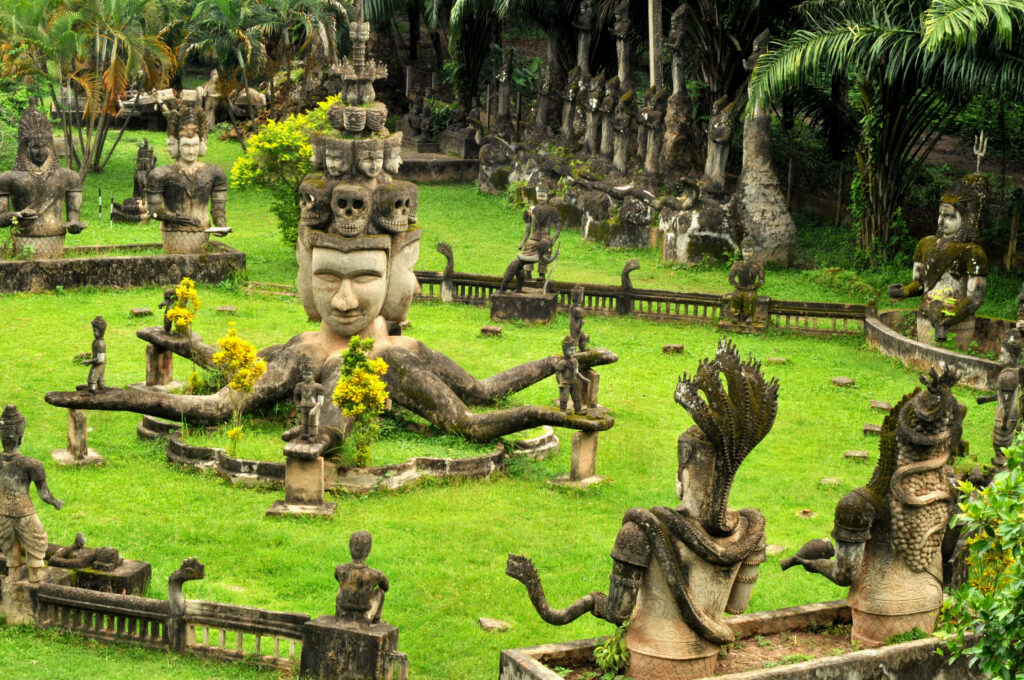
Curled around the banks of the Mekong River near the Thai border, Laos’ capital, Vientiane, sits. This restful city is a beautiful place to enjoy a drink while taking in views of the Mekong River. The city is known for its blend of French-colonial architecture and Buddhist temples. It is also home to the national museum and the nearby Xieng Khuan Buddha Park. To the north, Vang Vieng nestles amongst towering limestone outcrops and verdant rice fields. This stunning location offers opportunities for rock climbing, caving, river tubing, and hiking.
Luang Prabang, perhaps Laos’ most alluring destination, boasts elegant temples, wats, and French shopfronts adorned with the faded opulence of a bygone era. The nearby Kuang Si waterfalls are breathtaking and make a popular day trip from the city.
Further afield, the northern towns of Phongsali, Luang Namtha, and Udomxai are potential starting points for exploring the remote north, with its hiking opportunities to remote villages.
In the South, Savannah offers preserved French colonial architecture. Nearing the Cambodian border, Pakse is home to nearby Angkor-style ruins and Si Phan Don, the idyllic 4000-island river archipelago.
Laos has an area roughly the size of Great Britain and is a landlocked nation bordering Myanmar, Thailand, Cambodia, Vietnam and China. Mountains and plateaus cover almost three-quarters of the land, making the scenery dramatic with river valleys and mountain passes. Jagged mountain ranges characterise the northern half of the country. The Annamite Chain, which spans half the country’s length, features the Khammuan Plateau, characterised by its limestone grottoes and steep gorges.
The Mekong River runs parallel along the length of the country, marking part of the border with Thailand before flowing into Cambodia. It is navigable in places but the waterfalls and rocky islands around Si Phan Don mean it cannot be practically used for transport between Laos and Cambodia. The Mekong floodplains, located in the central part of the Laos portion of the river, are where most of Laos’ rice is cultivated and comprise the most tropical part of the country.
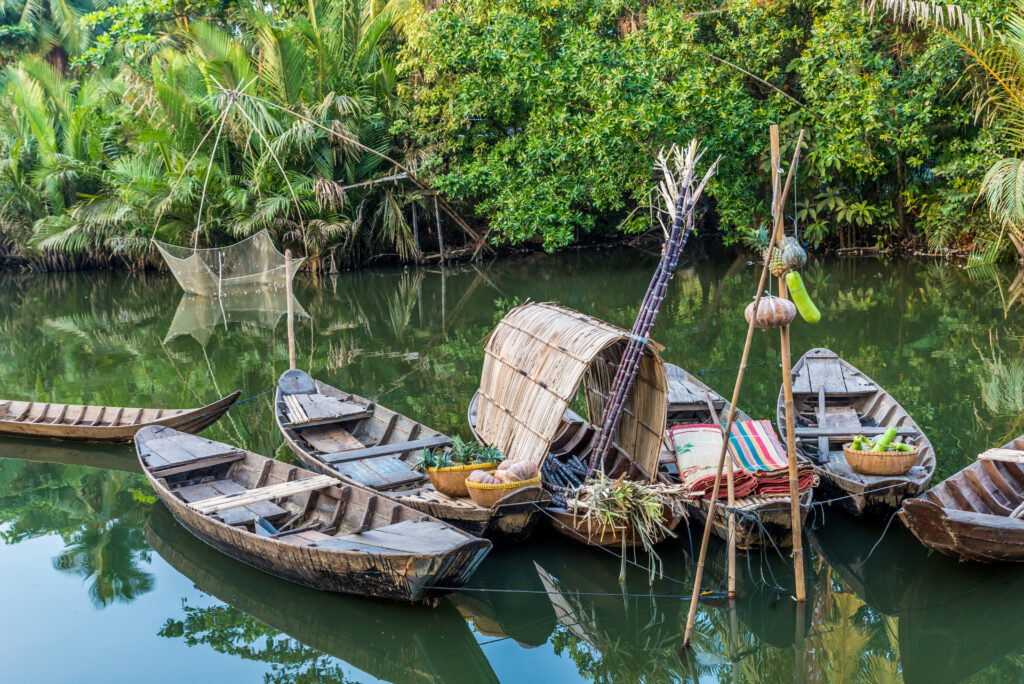
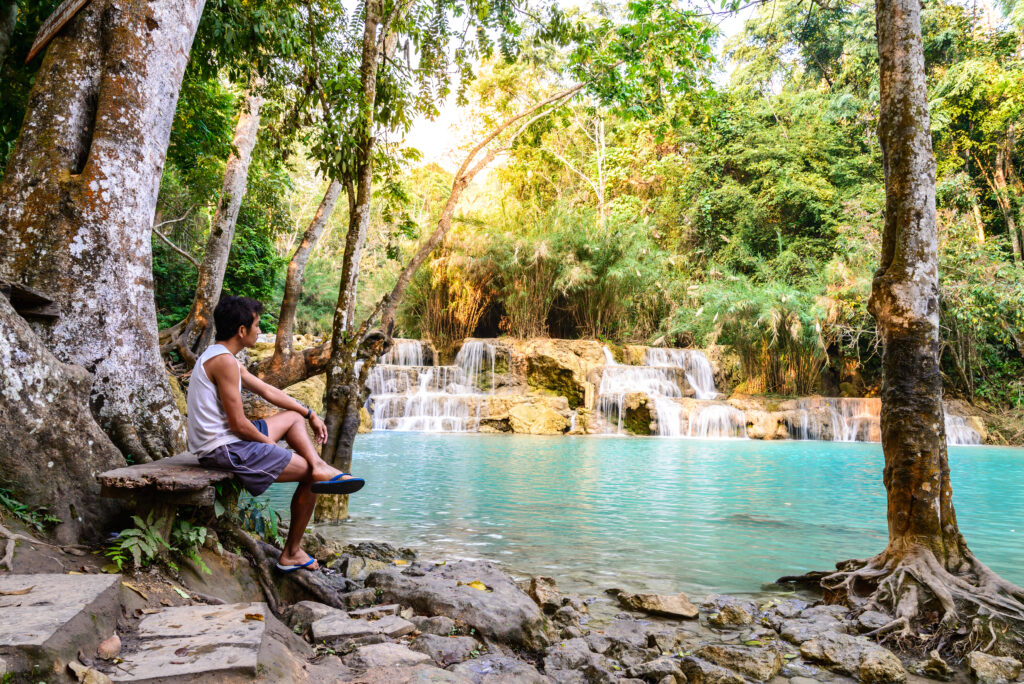
Laos is a diverse nation and has, at times, been estimated to have up to 149 distinct groups. They are simplified into three main groups, based on their altitude of origin – the Lao Loum (lowland Lao), Lao Theung (Lao of the mountain slopes), and Lao Soung (Lao of the mountain tops). The Lao Tai is the fourth group, often combined with the Lao Loum. The Lao Tai, also known as the Tai people, are closely related to the Lao Loum and share many cultural similarities. However, they have their distinct traditions and have resisted adapting to mainstream culture. Over half of the population is Lao Loum, and their language is the national language.
Around 60% of the population, including most of the lowland Lao, follows Theravada Buddhism. However, the religious landscape of Laos is not solely defined by Buddhism. Spirit worship, known as Phii worship or animism, is another significant influence. Despite being officially banned, it coexists harmoniously alongside Buddhism, creating a unique and intriguing tapestry of religious beliefs.
One of the specific cultural norms in Laos is the requirement to always wear shirts. This, along with covering shoulders and thighs, is part of dressing conservatively in the country.
Respecting the local beliefs, it’s important to remember that feet are considered unclean in Laos. Therefore, you should never step over anyone. If you accidentally kick someone, a sincere apology and a smile go a long way. Also, it’s a cultural norm that a person’s head is sacred and should not be touched, regardless of age, including children.
Laotian cultural practices are rooted in peace and respect. For instance, shoes are generally removed before entering a home or temple. If sitting, the feet should always point away from any religious image or statue, a sign of utmost respect.
Laos is famously laid-back and friendly, and visitors will find that they receive a more welcoming reception when they embrace the local customs and traditions. A warm smile and a friendly ‘sabai di’ (hello) will help you connect with the locals and feel more accepted in this beautiful country.
Fa Ngum, a Lao prince who received his education in Angkor, played a pivotal role in the formation of the first extensive Lao kingdom in the mid-14th century. The capital was at Xiang Dong Xiang Thong, later renamed Luang Prabang. This kingdom persisted until the early 18th century, despite invasions and succession disputes.
King Visoun took power in 1501. His grandson, Setthathirat, relocated the capital from Xiang Dong Xiang Thong to Viang Chan, which was later renamed Vientiane by the French. Setthathirat’s reign was marked by a grandeur of architectural wonders, including monasteries in Luang Prabang, a new palace in Viang Chan, Pha That Luang and several royal temples. He also commissioned Xieng Thong, considered the most beautiful surviving Buddhist temple in Laos, as well as several others.
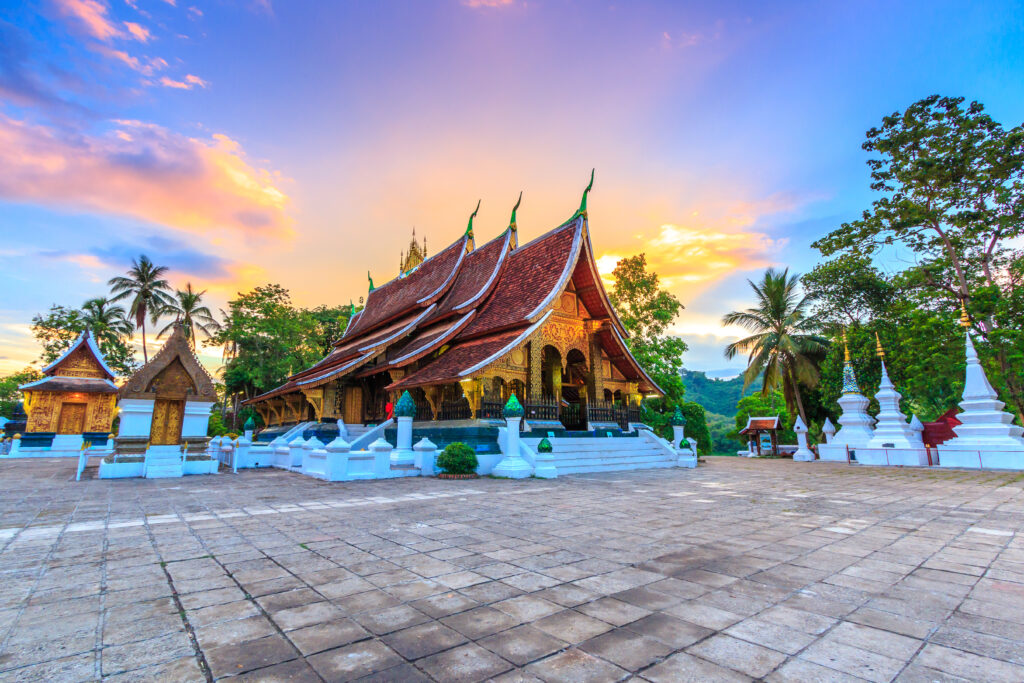
The kingdom endured until the death of King Suriya Vongsa. The rulers of Luang Prabang and Champasak declared independence, fragmenting Laos into several weaker kingdoms that the Siamese subsequently targeted. Siam, now Thailand, ruled Laos, with all kings requiring prior approval before being crowned and regular tributes being paid.
In 1893, French colonists gained control of all territory east of the Mekong River. Administrative control was returned to Vientiane, and Vietnamese civil servants and French officials were installed to enforce colonial control.
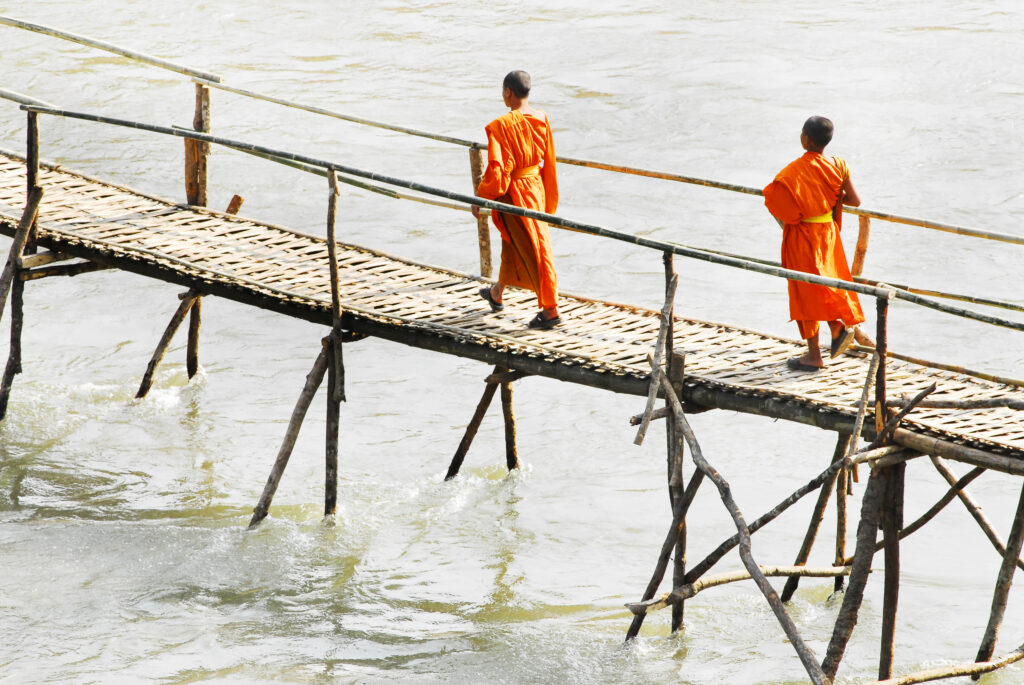
Towards the end of World War II, the Japanese occupied Laos, before control was returned to France. Full independence was granted in 1953.
During the Vietnam War, the North Vietnamese and the Americans used Laos to gain a strategic advantage, despite it being a neutral state.
After the war, Laos became a communist state after a brief, unsuccessful coalition. The 650-year monarchy was suspended. The government is identified as a democratic state and has opened itself to market-oriented reform and overseas aid.
Electricity: Voltage is 220 volts. Plugs and sockets (outlets) of type A, type B, type C, type E and type F are used. If you use another type (the UK, for example, uses type G), you will need an adaptor.
Time Difference: UTC +7. For other time differences, please visit www.timeanddate.com
The Trans Mongolian Railway holds a certain mystique for adventure travellers. It’s one of the classic overland routes like the…
Why Singapore should be on everyone’s list! Travel is an exciting experience for most, but for some, the uncertainty and…
Having discovered my passion for travel in my late teens and travelled extensively throughout my twenties, it was with great…
We are passionate adventure travelers who want to share the world and our travel experiences with everyone…
This website uses cookies so that we can provide you with the best user experience possible. Cookie information is stored in your browser and performs functions such as recognising you when you return to our website and helping our team to understand which sections of the website you find most interesting and useful.
Strictly Necessary Cookie should be enabled at all times so that we can save your preferences for cookie settings.
If you disable this cookie, we will not be able to save your preferences. This means that every time you visit this website you will need to enable or disable cookies again.
